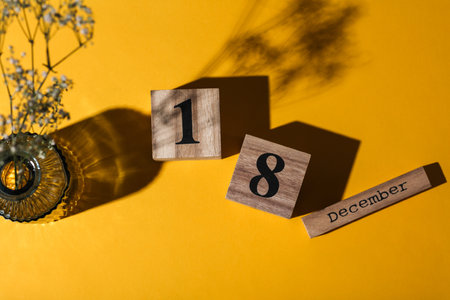Introduction to British Palmistry
From the misty moors of Yorkshire to the bustling streets of London, palmistry—commonly known as chiromancy—has long woven itself into the fabric of British culture. The art of reading hands has fascinated Britons for centuries, threading its way through folklore, literature, and even royal courts. But what is it about the lines and shapes of our palms that captivates the national imagination? In Britain, where tradition mingles with curiosity, the hands of notable figures have always drawn particular attention. Whether it was Queen Victorias regal fingers or Winston Churchills formidable grip, the study of their palms became a window into their characters, destinies, and legacies. This enduring intrigue is more than mere superstition; it reflects a collective desire to understand greatness through tangible signs. By exploring the history and stories behind famous British palms, we uncover not only a quirky pastime but also a deeper narrative about identity, fate, and the subtle ways our bodies mirror our histories.
2. Historical Roots: Palmistry in British Culture
Palmistry, or chiromancy, traces its enigmatic threads deep into the tapestry of British history. While the notion of reading palms can be found in ancient cultures worldwide, it was Britain’s unique blend of folklore, aristocratic curiosity, and spiritual exploration that shaped palmistry’s local character. During the medieval era, palmistry was often cloaked in secrecy—considered both a mystical art and a forbidden practice. Monastic scribes sometimes recorded palm signs as omens or divine messages, weaving them into tales of knights and kings.
By the Elizabethan age, palmistry began to make cautious appearances at courtly gatherings. It offered a tantalising glimpse into one’s fate—a subject that fascinated nobles as much as commoners. Yet it was not until the Victorian period that palmistry truly flourished across Britain. The Victorian parlour became a stage for mystical entertainment; hostesses would invite professional palmists to read guests’ hands amid candlelight and tea, bridging science with mysticism.
Evolution of Palmistry Practices in Britain
| Era | Main Characteristics | Notable Figures/Events |
|---|---|---|
| Medieval | Mystical, secretive; linked to superstition and religion | Monastic chroniclers; oral tradition |
| Elizabethan | Cautious curiosity among nobility; integrated with astrology | John Dee (alchemist); royal courts |
| Victorian | Popular parlour entertainment; scientific interest emerges | Catherine Crowe (writer); Society for Psychical Research |
The progression from clandestine consultations to celebrated drawing-room amusements reflects how the British public’s relationship with palmistry evolved alongside broader societal changes. This spiritual and cultural journey set the stage for the analysis of notable British palms—hands whose shapes and lines tell stories interwoven with the nation’s history.

3. Winston Churchill: Leadership Etched in Lines
When we trace the contours of British history, few hands loom larger than those of Winston Churchill. Imagine, for a moment, the legendary statesman seated at his desk during the darkest days of the Blitz—his fingers wrapped around a fountain pen, his palm pressed to the parchment as he penned words that would rally a nation. To analyse Churchill’s finger shapes is to glimpse into the very nature of resilience and unwavering conviction.
The Shape of Resolve
Churchill’s fingers were famously robust—thick at the base, with slightly rounded tips, exuding both strength and warmth. In British palmistry traditions, such hands are often seen as a sign of practical intelligence and steadfastness. The square palm and prominent knuckles suggest a mind inclined towards methodical thinking, yet capable of remarkable adaptability. These features mirror Churchill’s ability to navigate complex political landscapes while remaining grounded in his principles.
Lines That Tell Stories
Looking closer, one might imagine deep-set lines crossing Churchill’s palms—markings that hint at a life of extraordinary challenge and achievement. In the lore of hand reading, a pronounced Head Line denotes clarity of thought and sharp wit, qualities no one could deny Churchill possessed in abundance. A strong Life Line, meanwhile, hints at his formidable vitality and capacity to rebound from adversity—a trait that became almost mythical during World War II.
The Finger of Destiny
Pay special attention to his index finger—the Jupiter finger in palmistry—which is said to reflect leadership ambitions. Churchill’s was notably prominent, perhaps symbolising not only his drive for power but also his belief in destiny. Through every gesture and handshake, this digit seemed to declare: “I am here to shape history.”
Through the lens of palmistry and intuition, Churchill’s hands reveal more than just physical form; they speak of a spirit forged by hardship and illuminated by vision. His palms remind us that sometimes, true leadership is written not just in speeches or deeds—but etched into our very being.
4. Queen Victoria: Authority and Grace
When one delves into the study of Queen Victoria’s palm, one embarks on a journey through the echoes of Victorian Britain—an era defined by formidable authority, yet softened by an undercurrent of grace. The fingers of Queen Victoria, as chronicled in historical accounts and preserved impressions, reveal much about her character and rule. In British palmistry tradition, each finger symbolises distinct qualities, and it is in these fine details that we uncover the subtle interplay between sovereignty and sensitivity that characterised her reign.
The Shape and Structure: A Mirror to Monarchy
Queen Victoria’s hands were often described as slender with gently tapered fingers, neither too long nor too short—signifying balance and moderation. The index finger, or Jupiter finger, appeared prominent, suggesting natural leadership and an unwavering sense of duty. Her middle finger (Saturn), straight and strong, indicated prudence and seriousness of purpose. Notably, her ring finger (Apollo) was proportionate but not dominant, hinting at an appreciation for the arts without ostentation. The little finger (Mercury), refined and agile, reflected diplomatic acumen—essential for a monarch navigating both personal and political alliances.
Finger Traits Attributed to Queen Victoria
| Finger | Shape | Symbolic Meaning | Victorian Resonance |
|---|---|---|---|
| Index (Jupiter) | Prominent, upright | Leadership & authority | Sovereign command; duty to nation |
| Middle (Saturn) | Straight, strong | Responsibility & wisdom | Moral backbone of the empire |
| Ring (Apollo) | Proportionate | Cultural appreciation | Paternal care for the arts & tradition |
| Little (Mercury) | Tapered, agile | Communication & diplomacy | Navigating court intrigue & alliances |
The Symbolic Resonance: Authority Softened by Grace
The unique combination of these finger shapes mirrors the dual legacy of Queen Victoria: her reign was marked by formidable power, yet it was tempered with personal restraint and empathy. This harmony is echoed in how she balanced imperial expansion with social reform—a dance between firmness and compassion. The symbolic resonance lingers today; to hold “Victoria’s hand” is to feel both the weight of history and the gentle touch of enlightened rulership. Through the lens of palmistry, Queen Victoria’s fingers continue to whisper stories of dignity and grace that defined not only a monarch but also an age.
5. William Shakespeare: Creativity at His Fingertips
Of all the illustrious British figures, none evokes the spirit of imagination quite like William Shakespeare. Though authentic palm prints from the Bard himself remain shrouded in mystery, palmistry enthusiasts have long speculated about the shape and nuance of his hands, drawing connections between physical form and creative genius. If we picture Shakespeare’s fingers, tradition suggests they would be long and supple, with gently tapered tips—a classic indicator of an artist’s hand. In British palmistry, such “conic” fingertips are said to reveal a person whose thoughts and actions are guided by intuition and inspiration rather than rigid logic.
The Artistic Hand: A Mirror of Imagination
Examining these imagined traits through a spiritual lens, we might say that Shakespeare’s hands were vessels for channeling stories from the unseen into the written word. The delicate balance between his index (Jupiter) finger and ring (Apollo) finger could hint at his ability to harmonise ambition with creative flair—an alchemy essential for playwrights seeking both recognition and artistic fulfilment.
Intuition Etched in Every Line
British folklore often holds that individuals with prominent lines curving beneath their fingers—the so-called “lines of intuition”—are endowed with a sixth sense for perceiving subtle energies and hidden truths. In Shakespeare’s era, this trait would have been regarded as a mark of visionary talent, someone who could weave magic from the mundane. Perhaps it was this very quality that enabled him to craft characters so profoundly human yet touched by something otherworldly.
A Legacy Written in Palms
Through the lens of palmistry, Shakespeare’s legacy becomes more than ink on parchment; it becomes a story written upon his very skin. Whether or not we ever uncover an authentic trace of his palm, the idea that creativity can be read in our hands is deeply woven into British cultural mystique. It reminds us that every hand carries its own myth—and perhaps, within each of us, there lies the spark of a poet waiting to be awakened by intuition and imagination.
6. Modern Icons: From The Beatles to Dame Judi Dench
As we step into the vibrant tapestry of modern British culture, a new gallery of hands beckons us—each palm etched with the story of talent, charisma, and enduring legacy. Consider The Beatles, those four lads from Liverpool who not only transformed music but also became living symbols of British creativity. Imagine John Lennons slender, artistic fingers—so often seen strumming a guitar or scribbling poetic lyrics. Palmist intuition suggests that such elongated fingers reveal not just musical dexterity but an innate sensitivity and intellectual curiosity; a hand reaching ever outward, eager to grasp new ideas and emotions.
Paul McCartney’s broad palms and well-proportioned digits might hint at his grounded yet innovative spirit—a blend of practical vision and boundless optimism. George Harrison’s more tapered fingers could be seen as reflecting his introspective soul, always searching for spiritual resonance beneath the surface of fame. Ringo Starr’s sturdy hands, meanwhile, exude the steady rhythm and unassuming confidence that kept the Fab Four in sync through their meteoric rise.
Turning to the world of drama, Dame Judi Dench stands as a beacon of grace and gravitas. Her hands—often poised mid-gesture on stage or screen—speak volumes about her craft. A palmist might observe her balanced, square-tipped fingers and see evidence of clarity, discipline, and a deep-rooted sense of purpose. Such traits have allowed her to embody Shakespearean queens and modern matriarchs with equal conviction, leaving an indelible mark on British theatre and film.
In these contemporary icons, the language of the hand becomes both mirror and map: reflecting unique gifts while pointing towards the legacy they leave behind. Whether it’s the creative surge in Lennon’s fingertips or Dench’s composed authority in every motion, each palm tells a tale beyond words—a silent testament to what it means to be truly remarkable in modern Britain.
7. Conclusion: The Enduring Magic of British Palms
There is something ineffably British about looking for stories in the lines of a hand. Whether it’s the poetic musings of a Victorian lady gazing at her own fate, or the quiet curiosity of a modern-day Londoner tracing their lifeline on a rainy afternoon, palmistry has woven itself into the tapestry of our culture. Perhaps it is our national penchant for introspection, our love of myth and mystery, or simply the desire to find meaning in the everyday that keeps us fascinated by hands. From Shakespeare’s noble characters to Churchill’s resolute fingers, each notable figure reminds us that our hands are not just tools but storytellers—silent witnesses to our hopes, struggles, and destinies. Today, as palmistry continues to inspire both intuition and imagination, it invites us to pause and listen to the subtle wisdom whispered by our own palms. In these lines, we see not only echoes of history but also the enduring magic that connects past to present, legend to life—a gentle reminder that every hand holds a story waiting to be told.


